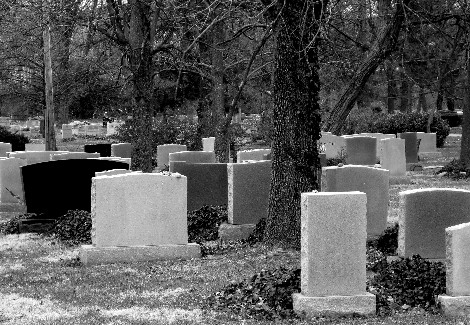Where are all the historical accounts of all of those dead people who climbed out of their graves and mingled with normal living people on Good Friday? There’s only one plausible answer. There are no such historical accounts because the Bible is incorrect. Formerly dead people never crawled out of their graves and visited normal living people.
Nontheless, Bible literalists (there are millions of such people) continue to claim that everything in the Bible is literally true. Then why aren’t there any historical (non-Christian) accounts of all of the incredible things that happened at the moment Jesus allegedly died?
Supposedly there were earthquakes. Supposedly, dead people became alive again and crawled out of their graves, then “they began to walk around, appearing to many in Jerusalem.” Nothing like this has happened before or since (except on zombie movies). Why, then the absolute silence in reputable history books? Why don’t the Gospel writers (other than Matthew) mention these incredible “events”? This deafening silence is yet more proof that the Bible is not literally true.
Here’s the relevant passages from Matthew:
27:51 And, behold, the veil of the temple was rent in twain from the top to the bottom; and the earth did quake, and the rocks rent;
27:52 And the graves were opened; and many bodies of the saints which slept arose,
27:53 And came out of the graves after his resurrection, and went into the holy city, and appeared unto many.
27:54 Now when the centurion, and they that were with him, watching Jesus, saw the earthquake, and those things that were done, they feared greatly, saying, Truly this was the Son of God.
I recently spoke with two Bible literalists about these spectacular claims in Matthew. They both explained that these amazing events were obvious to everyone back then and people simply passed them off by word of mouth. Thus, no need for any historical account of this incredible day. I don’t buy this “explanation” for a second. That would be like saying that there is no need for written acounts of 9/11 because we have a rich historical account. Contrary to the claims of the two literalists, if a man’s crucifixion really led to earthquakes and then many people climbed out of their graves and walked around, mingling with many “living” people, there would be many–MANY– (Christian and non-Christian) books written about these extraordinary events.
If even ONE dead person really crawled out of a grave and walked around, it would be the story of the year. Such an extraordinary event would be documented in millions of books, magazines and other documents.
For much more information on the highly suspicious historical silence regarding the many alleged miracles of Christianity, spend a bit of time at Earl Doherty’s terrific site: Jesus Puzzle. Doherty tells us to pay special attention to the lack of any Christian writings detailing the alleged life and miracles of Jesus for an eye-p0pping forty years subsequent to the alleged death and resurrection of Jesus (The above link takes you to Doherty’s home page–then click on “Putting the Jesus Puzzle Together in 12 Easy Pieces”). Here’s the summary of Doherty’s main article (a link to the more detailed article is provided at that location):
The Gospel story, with its figure of Jesus of Nazareth, cannot be found before the Gospels. In Christian writings earlier than Mark, including almost all of the New Testament epistles, as well as in many writings from the second century, the object of Christian faith is never spoken of as a human man who had recently lived, taught, performed miracles, suffered and died at the hands of human authorities, or rose from a tomb outside Jerusalem. There is no sign in the epistles of Mary or Joseph, Judas or John the Baptist, no birth story, teaching or appointment of apostles by Jesus, no mention of holy places or sites of Jesus’ career, not even the hill of Calvary or the empty tomb. This silence is so pervasive and so perplexing that attempted explanations for it have proven inadequate.


